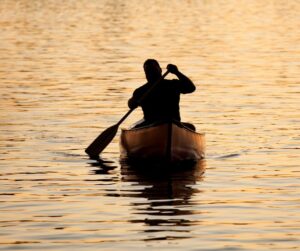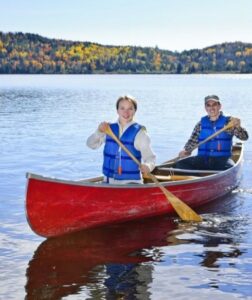2022-May-16
Canoes – How Safe Are They? And What Can You Do?
It’s a beautiful sunny day. And you or your family or your guests can’t wait to get on the water. The canoe is just sitting there on the dock so what better way to spend the afternoon on the water than to hop in a canoe, get a tan and soak in nature. There’s no motor, people will be close to shore so what could go possibly wrong – even if the people in the canoe are totally inexperienced?
 But the fact is that troubling numbers have emerged about the use of canoes and the drowning fatalities associated with them.
But the fact is that troubling numbers have emerged about the use of canoes and the drowning fatalities associated with them.
It seems that people look at canoes as one of the safest on water activities. But nothing could be further from the truth. Last year’s OPP fatality data showed canoes as the vessel type with the most drownings at 10 of the 27 that occurred or 37%. In 2020 the results were the same with 12 canoeing deaths out of 32 fatalities or 38%.
The figures released last year by the Drowning Prevention Research Centre, the preeminent source of drowning data in Canada, show that from 2013 to 2017 that the number of country wide drowning fatalities from power boats under 5.5 metres and canoes were tied for first at 23%. Tied for number one!
The most common boating incidents causing fatalities are capsizing, falling overboard, and being swamped and all these can easily occur in a canoe.
And, most importantly, the overwhelming commonality in drowning fatalities across the country and across the years is that of those who drowned, regardless of vessel type, is that between 80 and 90% of the victims were not wearing lifejackets.
What can you do?
 The answer really is obvious. Be aware of who is hopping in your canoe and what their abilities are. What’s the weather? Can you keep an eye on them? And have them wear a lifejacket!
The answer really is obvious. Be aware of who is hopping in your canoe and what their abilities are. What’s the weather? Can you keep an eye on them? And have them wear a lifejacket!
Its interesting to note that last year in Ontario there was 1 kayak drowning. The ongoing Transport Canada Lifejacket wear study (found here) showed that just under 80% of kayakers observed were wearing PFDs. Last year in Ontario there were 10 canoeing drownings. And the same TC study showed lifejacket wear rates of slightly over 40%. The inference seems obvious. Lifejackets save lives.
And don’t fall for “but I’m a good swimmer” because most people haven’t ended up unexpectedly in the water – they can panic or they may be injured, or the water is cold – but if they are wearing a life jacket they will survive.
